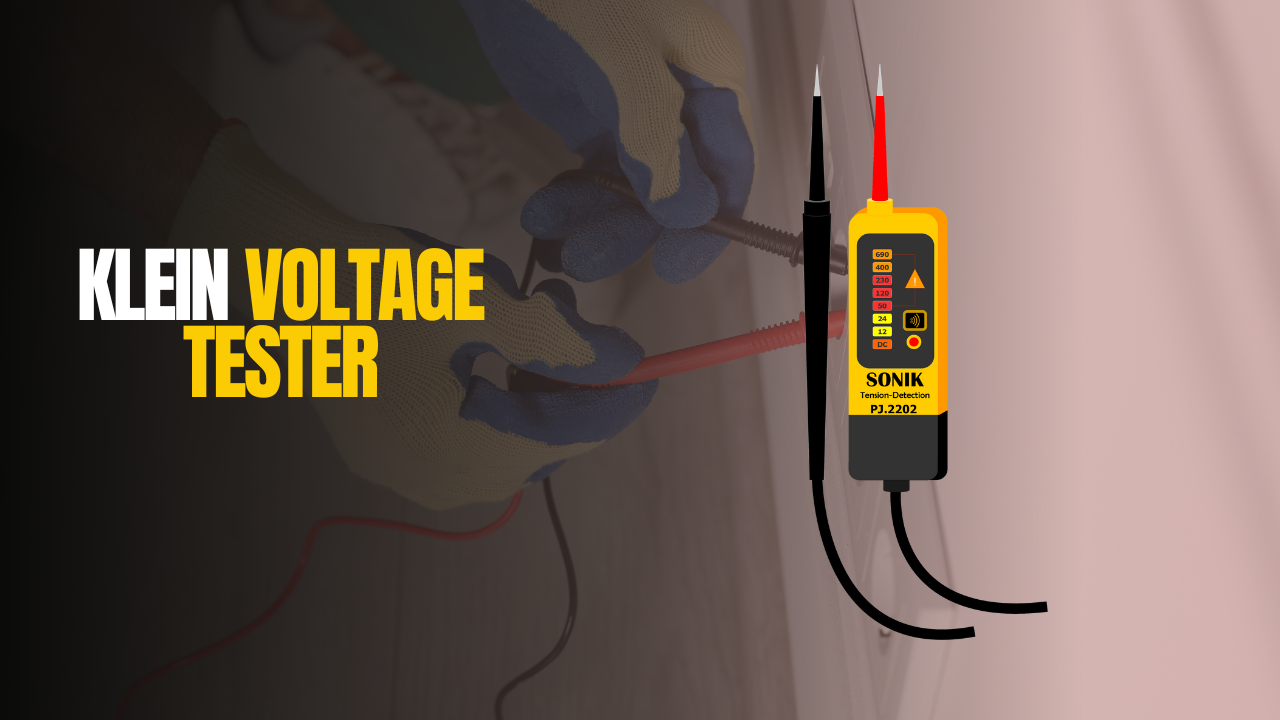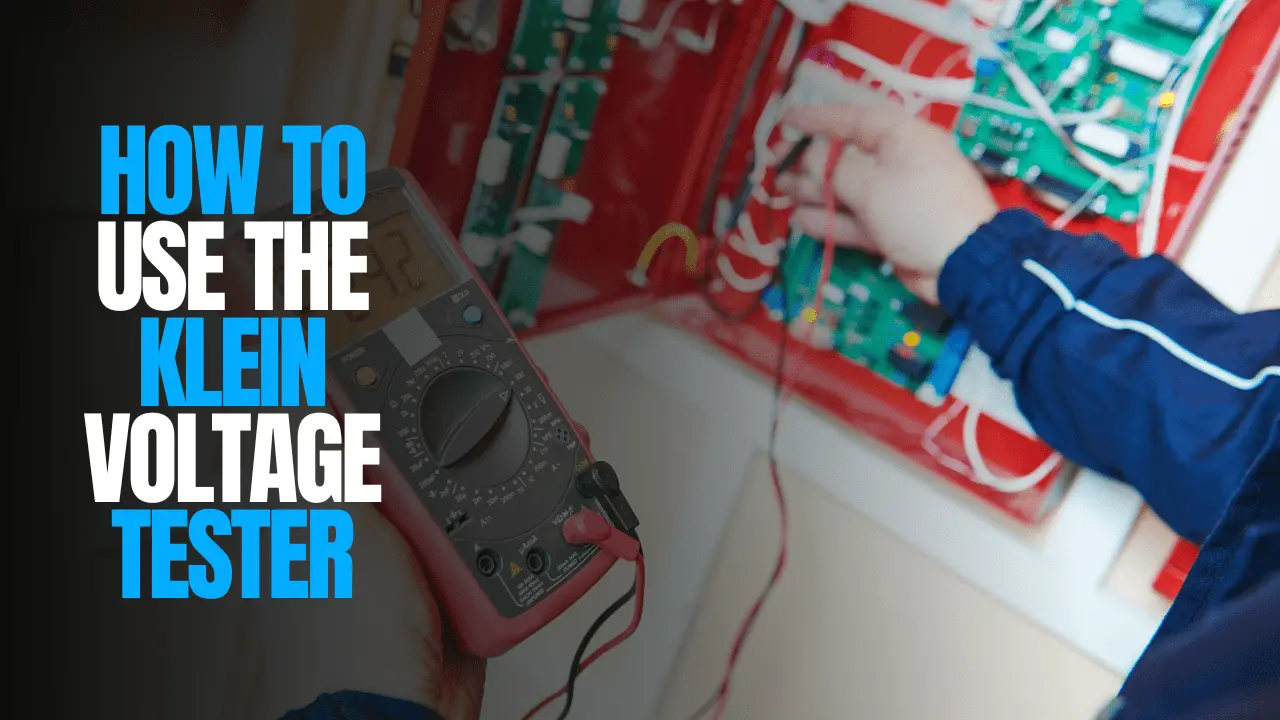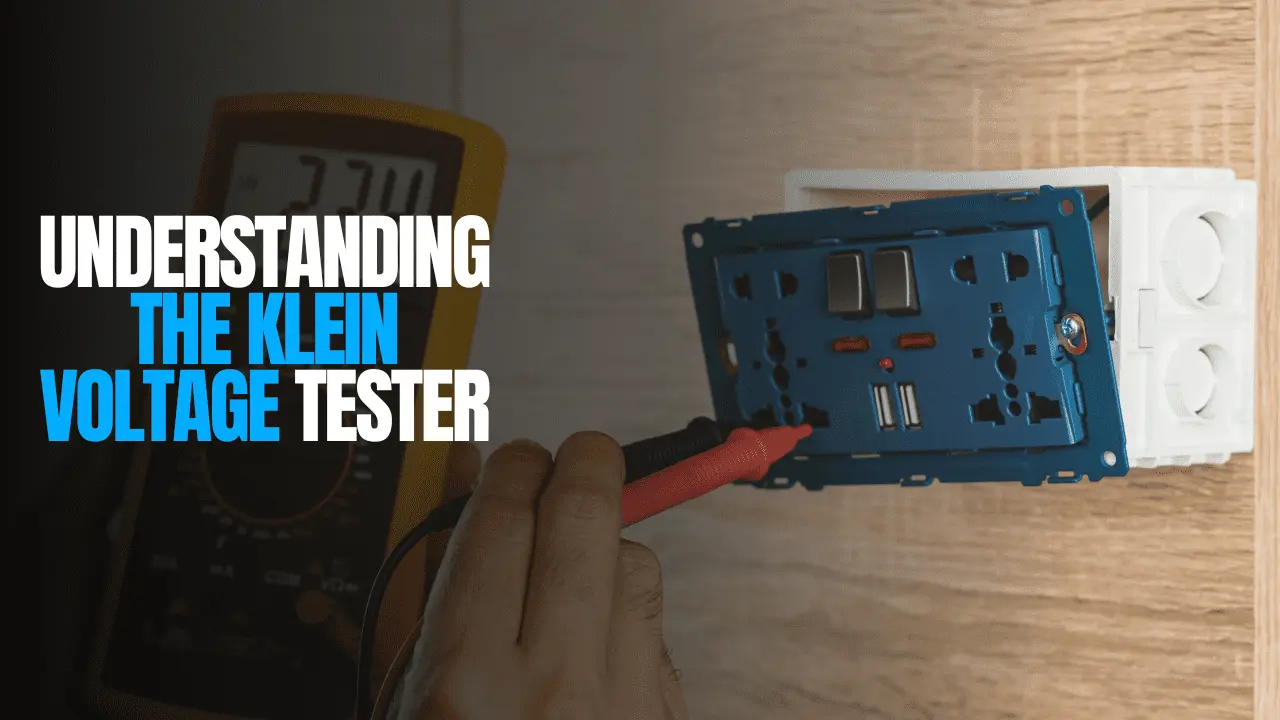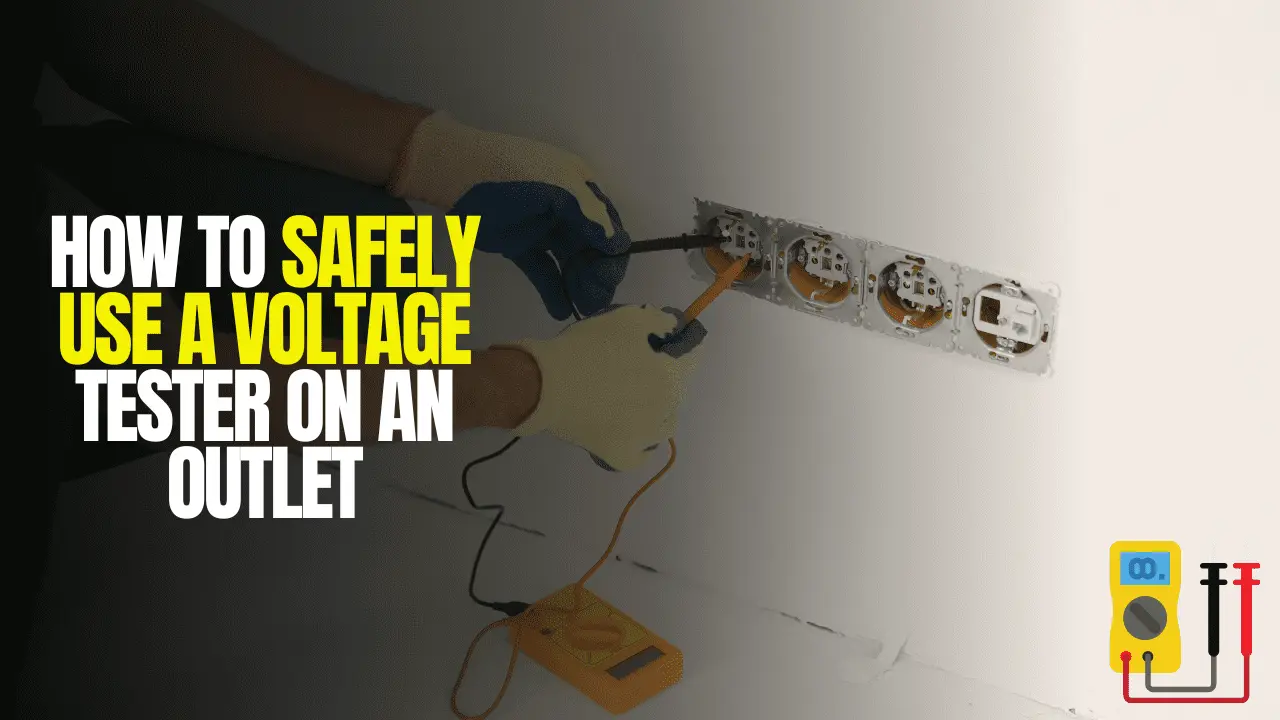In the field of electrical work, safety is the key factor. Ensuring a safe workspace is essential whether you’re a seasoned electrician or a DIY enthusiast. Today in this post I will teach you how to use a Klein voltage tester.

How to use the Klein voltage tester

At the core of electrical safety tools lies the Klein voltage tester. It is a device designed to accurately determine if an electrical circuit is live.
What is a Klein voltage tester?
A living voltage tester is an electrical tool that is used to find standard voltage. The tester is functional and has a bright green LED that doubles as a worklight. When diagnosing or repairing a malfunctioning asset knowing the presence of voltage is helpful.
Understanding the Klein Voltage Tester

Klein voltage tester consists of a handheld device. Which has a probe on one end and a display or indicator light on the other. Its function is to detect the presence of voltage in an electrical circuit. And alerting the user accordingly.
Step 1: Prioritizing Safety: Safety should always be a key factor when you are working with electricity. First, ensure you are wearing appropriate personal protective equipment. Such as insulated gloves and safety goggles. Which helps you to protect against potential electrical shocks. Before beginning any testing always confirm that the power to the circuit is turned off.
Step 2: Selecting the Right Tester: Klein offers various voltage testers designed for different applications. Before use, ensure you have the correct tester for the voltage range you’ll be working with. Most Klein voltage testers are suitable for standard residential voltages. But always consult the user manual to confirm compatibility with your specific needs.
Step 3: Conducting Voltage Testing: In this step, if you have the right tester insert the probe into the terminal that you want to test. Make sure the connection is secure for accurate readings. Activate the tester using the power button or trigger and observe the display or indicator light for results.
Step 4: Interpreting Results: After activating the tester, pay close attention to the display or indicator light. If voltage is detected, proceed with caution, assuming the circuit is live. If no voltage is detected, it’s safe to work on the circuit. To ensure accuracy, test multiple points within the circuit.
Step 5: Post-Testing Procedures: After testing, store your Klein voltage tester in a safe, dry place. Check it for any damage and replace worn-out components as needed. Daily maintenance and calibration are vital for keeping your tester accurate and good over time.
How to Safely Use a Voltage Tester on an Outlet

It’s essential to safely test outlet voltage when doing electrical work. First water safety kits. Make sure the outlet is off by turning off the power at the breaker. If off then ok otherwise you need to off. Make use of an outlet-compatible voltage tester (120V or 240V). Place the probe of the tester into the outlet slots. Turn it on, and look at the display.
Work safely if no voltage is detected; if it is, proceed cautiously. If needed, repeat for other outlets. When done, turn the power back on at the breaker. After use, store the tester securely. When handling electricity, safety should always come first.
FAQs
Which Klein voltage tester post-testing procedures are there?
Klein voltage tester post-testing procedures include putting the device in a safe, dry place, checking it for damage, and replacing any worn-out parts as necessary. It is also advised to perform routine calibration and maintenance to guarantee the tester’s dependability over time.
What safety measures need to be taken when utilizing a Klein voltage tester?
Before using a Klein voltage tester, make sure the circuit is powered off, wear safety goggles and insulated gloves to protect yourself from electrical shocks, and handle and store the tester according to the right procedures.
What is the operation of a Klein voltage tester?
Klein voltage tester operates by identifying whether there is voltage present in a circuit. The tester notifies the user with an audible or visual signal when the probe comes into contact with a live wire or terminal.
How can the voltage be checked?
3 Ways to Measure Voltage;
The potential electric energy between two points is measured as voltage. A voltmeter is an analog multimeter that can be used to measure the voltage. Although you can use an analog multimeter as well. Most electricians and beginners prefer digital multimeters.
More for you: How to fix an overloaded circuit